
Contents





A Magician Who Works Miracles






Gondeure-Bap
From Historical Survival Food to Modern Health Booster
Grown in the north province of Gangwon-do, a precious food that helped people get through the harsh winter back in the past is now highlighted once again for its nutritional value, along with its unique and nourishing taste. There is no better choice than gondeure-bap if you are looking for a fiber intense meal while still filling up your stomach.
Written by Lee Hwa-jeong Photographed by Studio Kenn
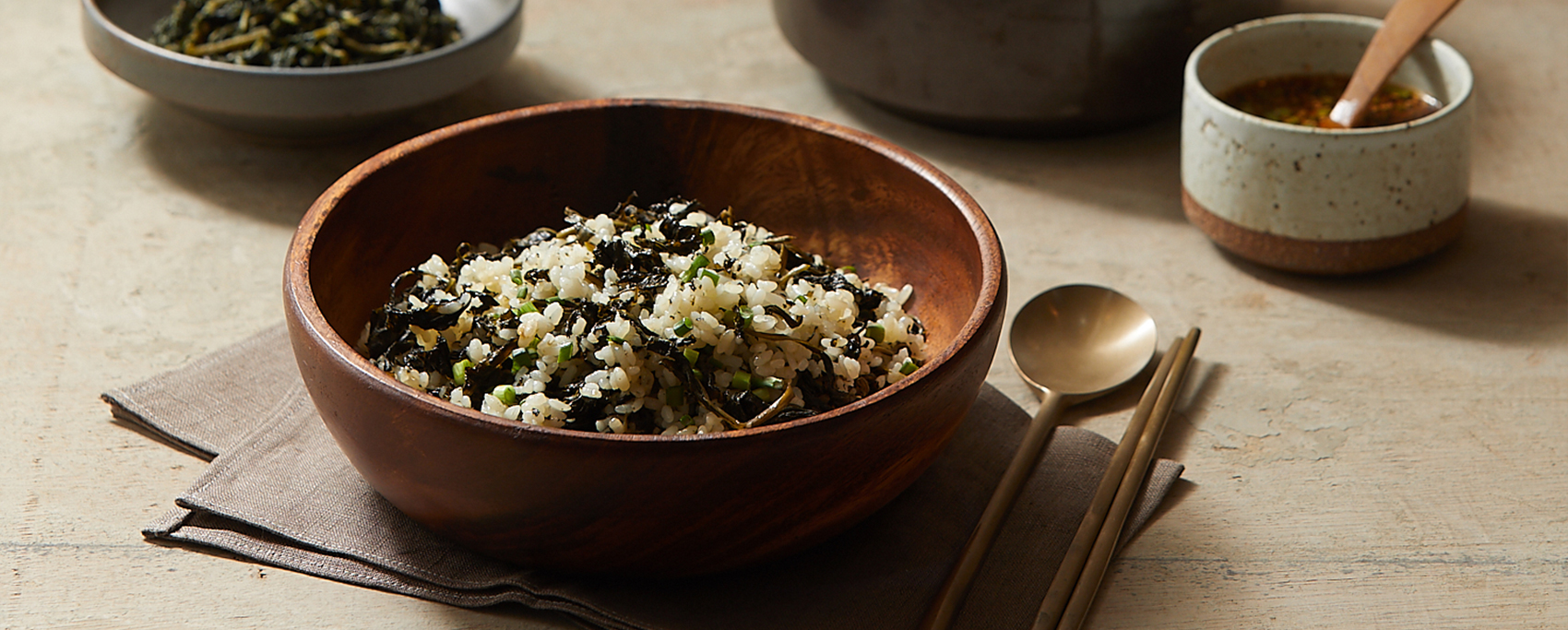
Precious Food That Served the Barren Season
While the origin of the name gondeure, a type of thistle, is not clear, it is assumed that it was named after how it looks in a big bush blown by the wind. Namul usually refers to cooked and seasoned green leaf vegetables, bap simply rice. As you would probably guess already, with the combination of these words, gondeure-bap
or gondeure-namul-bap is the rice cooked with gondeure thistle.
In Korean, the word gondeure is used for drunk people who stumble and fumble. That’s why the name of this food sounds rather humorous. Besides the humorous aspect of its name, this green vegetable actually served as a survival food for many in north Gangwon province where mountain surrounds villages and the winters are harsh, providing no food and leaving many people starving. This green, however, would grow anywhere in the mountains and to the eyes of the hungry, whatever nature produces is food.
People picked up this green mountain vegetable and dried it so they would have food during the barren season of winter. They mixed this with half the amount of rice and it was filling enough to tough out a day. This food that saved many people in the past is gaining a spotlight once again for its nutritional value. Abundant in vitamins and fiber, it provides what modern people don’t usually get from their diet. In particular, now when there is a dramatically increasing number of health-conscious people, gondeure-bap has become one of the most popular healthy foods in the market. To save more time for busy people, it can be purchased fully cooked and seasoned in the frozen food section of supermarkets. It still remains a mystery how our ancestors distinguished edible foods from the inedible and found the most nutritious food in the middle of the mountain, where everything looks the same to the untrained eye. Even today, it seems like we still benefit from their wisdom.
Connecting to Korea
Nandi joined us in making gondeure-bap. Originally from Uruguay she now lives in the United States. Her job as an interpreter has allowed her to travel all over the world. Nonetheless, she’d never taken a trip to Korea until she had a chance to visit her daughter-in-law from South Korea. “This is my first time in Korea and I’m very excited. In Uruguay, we see the Korean national teams playing in soccer matches every now and then. Other than that, simply because it’s on the other side of the world, we usually have no idea what Korean life is like.” She also added, “It’s where my daughter-in-law comes from, so I’d love to find out more. What I know for sure is I already like Korean people.” As she has been trying to adopt a vegetarian diet, she was delighted to see many different kinds of vegetable-centered dishes in Korean cuisine.
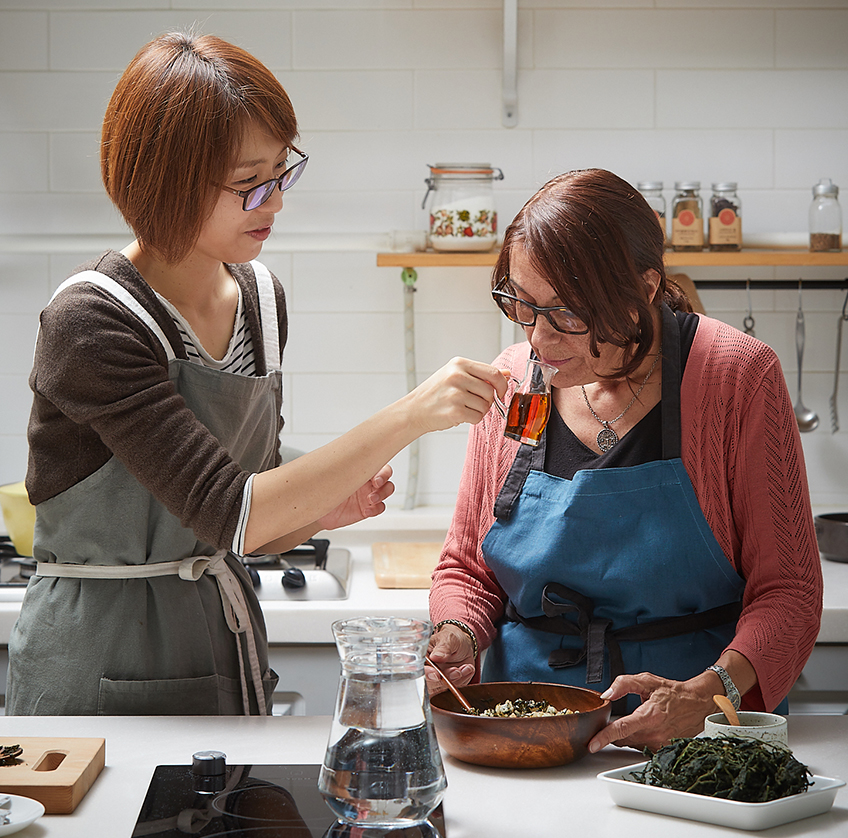 Nandi smells the sesame oil before seasoning the rice.
Nandi smells the sesame oil before seasoning the rice.Simplicity That Needs Patience
Gondeure usually comes dried, and needs to be soaked in water overnight. Having a tough texture as a mountain vegetable, cooking involves a lot of softening. It should be boiled in water for about an hour to begin with. Leave it in the warm water until it cools down. Then gently squeeze out the liquid. Cut this vegetable horizontally into bite sizes, and lightly season it with sesame oil and soy sauce.
As the instructor helped Nandi put on cooking gloves, she added that a lot of Korean people use their hands when mixing ingredients together. Nandi was amused by this, “In the States, people usually just use spoons and I didn’t even think about using my hands. It feels more engaging this way.” Indeed, it is really true when Koreans say you need “love, care and hands” when making good food.
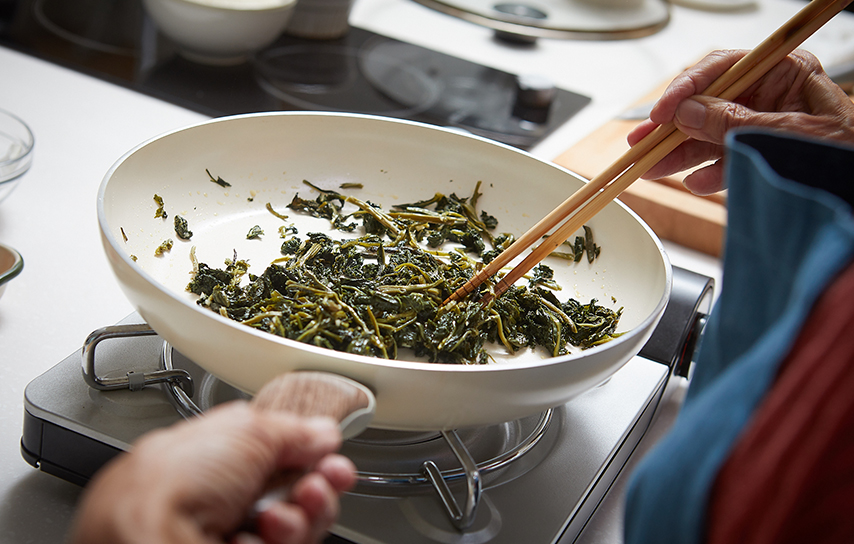 When the seasoned thistle goes in the pan, an earthy and healthy smell tickles the nose.
When the seasoned thistle goes in the pan, an earthy and healthy smell tickles the nose.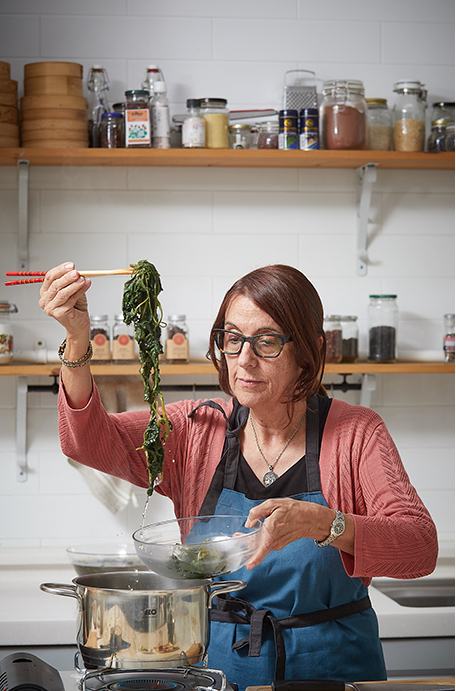 Nandi softened the tough vegetable and is finally ready to season it.
Nandi softened the tough vegetable and is finally ready to season it.Spread perilla oil or sesame oil on a pan, and pan fry the seasoned gondeure. You can make the thistle even softer by adding a splash of water and steaming it with the lid on the pan. Gondeure is pretty much done at this point and some people use this for a side dish. If you want to take it further and make gondeure-bap, spread this on the top of raw rice before you cook the rice. Other than putting the cooked thistle on top of the rice, it’s the same process as making steamed rice in a rice cooker or a pot.
The sauce that comes with gondeure-bap can be also be paired with other Korean food such as pajeon green onion pancake or kongnamulbap bean sprout rice. This means once you make the sauce and have it on hand, it will be convenient. You can simply mix soy sauce, red pepper powder, garlic, sesame oil and scallions. When the food was done, Nandi took a whiff and was impressed by its unique earthy smell. “Is it even possible for the smell to be healthy?”
Nourishment That Captured All
A bowl of gondeure-bap is full of nutrition that is perfect for modern people who live a fast-paced life. It’s a nourishing and easy meal when you need a simple go-to lunch idea or when you want to treat your guests to a more elaborate meal with many side dishes. Korea, being such a mountainous place is home to a wide variety of unique mountain vegetables. The nature of most of these vegetables are tough in texture. Therefore, if you keep this recipe, you can apply it to making other Korean food such as bibimbab mixed rice in which most of main ingredients are mountain vegetables.
The food that drew many visitors’ attention during the 2018 PyeongChang Olympic Games where it was all the more special because a lot of visitors had a hard time finding food at Korean restaurants featuring native and traditional vegetables, once again captured the visitor Nandi’s taste.
Cooking Tips
Ingredients
2 cups of white rice, 2 1/4 cups of water, dried gondeure thistle 20g, grated garlic 1 tsp, soy sauce 3 tsp, perilla oil (or sesame oil) 2 tsp, 1/4 cups of water (to add in a pan)
Ingredients for the sauce
soy sauce 3 tsp, pepper powder 1/2 tsp, grated garlic 1/2 tsp, perilla oil 1/2 tsp, chopped scallion 2 tsp, sprinkles of sesame seeds (optional)
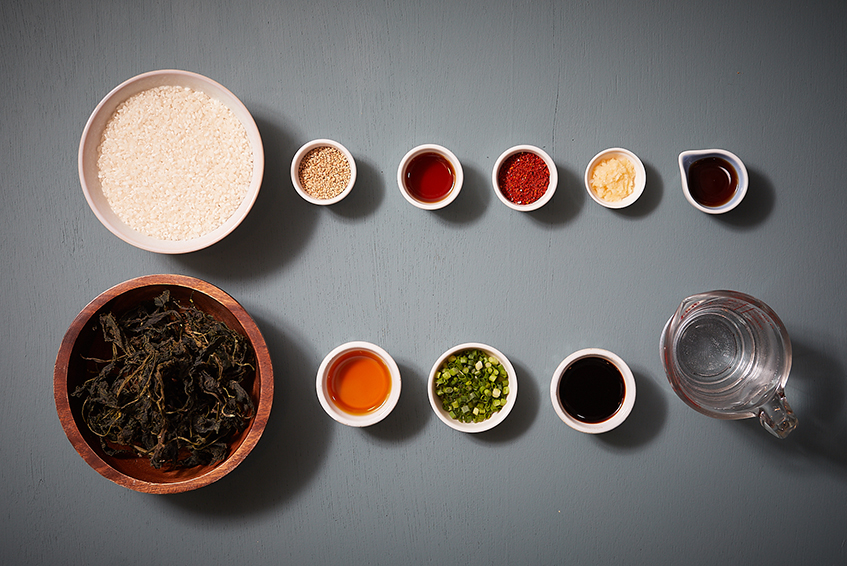
Other Articles





A Magician Who Works Miracles





Application of subscription
Sign upReaders’ Comments
GoThe event winners
Go


 November 2018
November 2018


